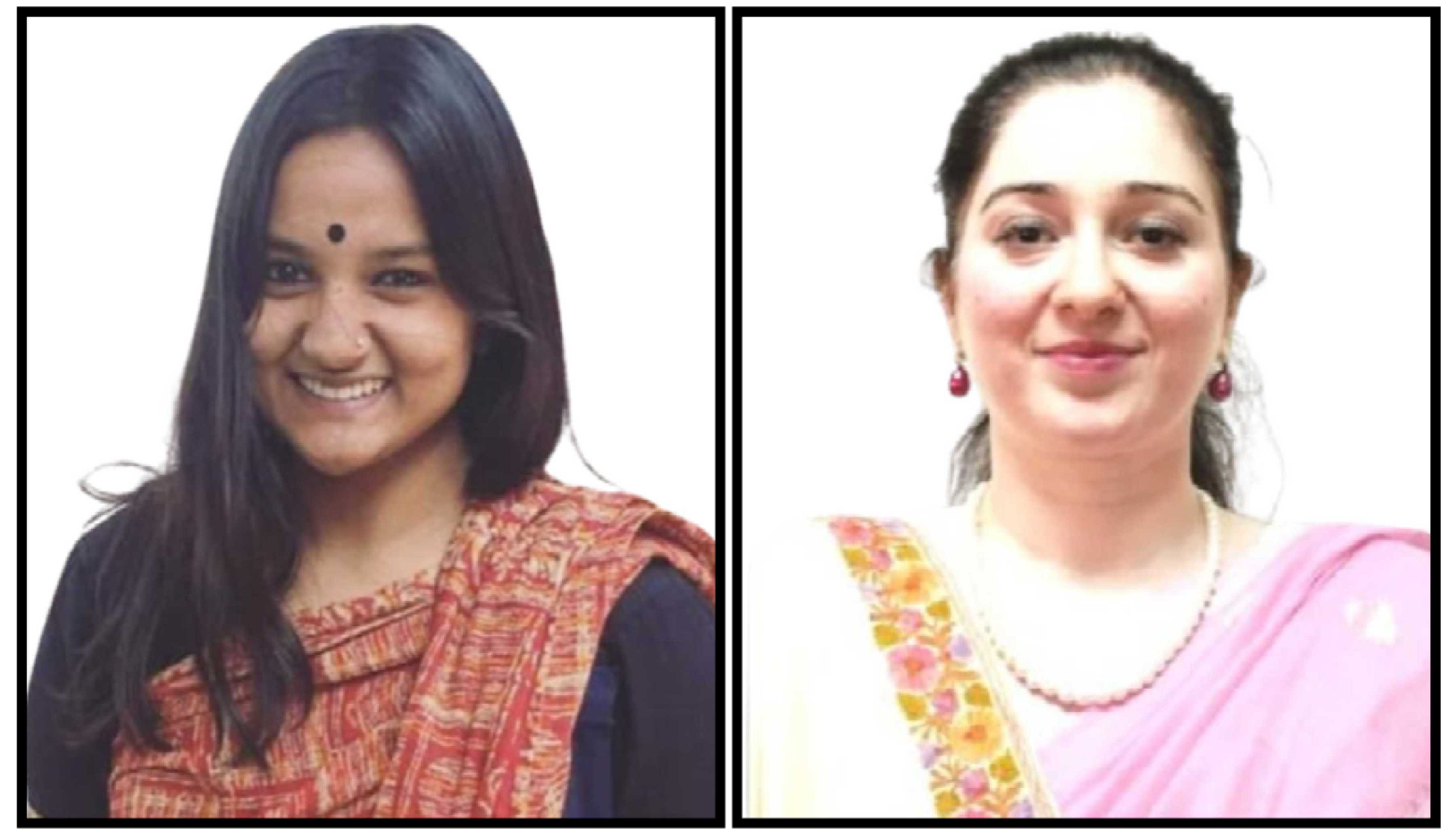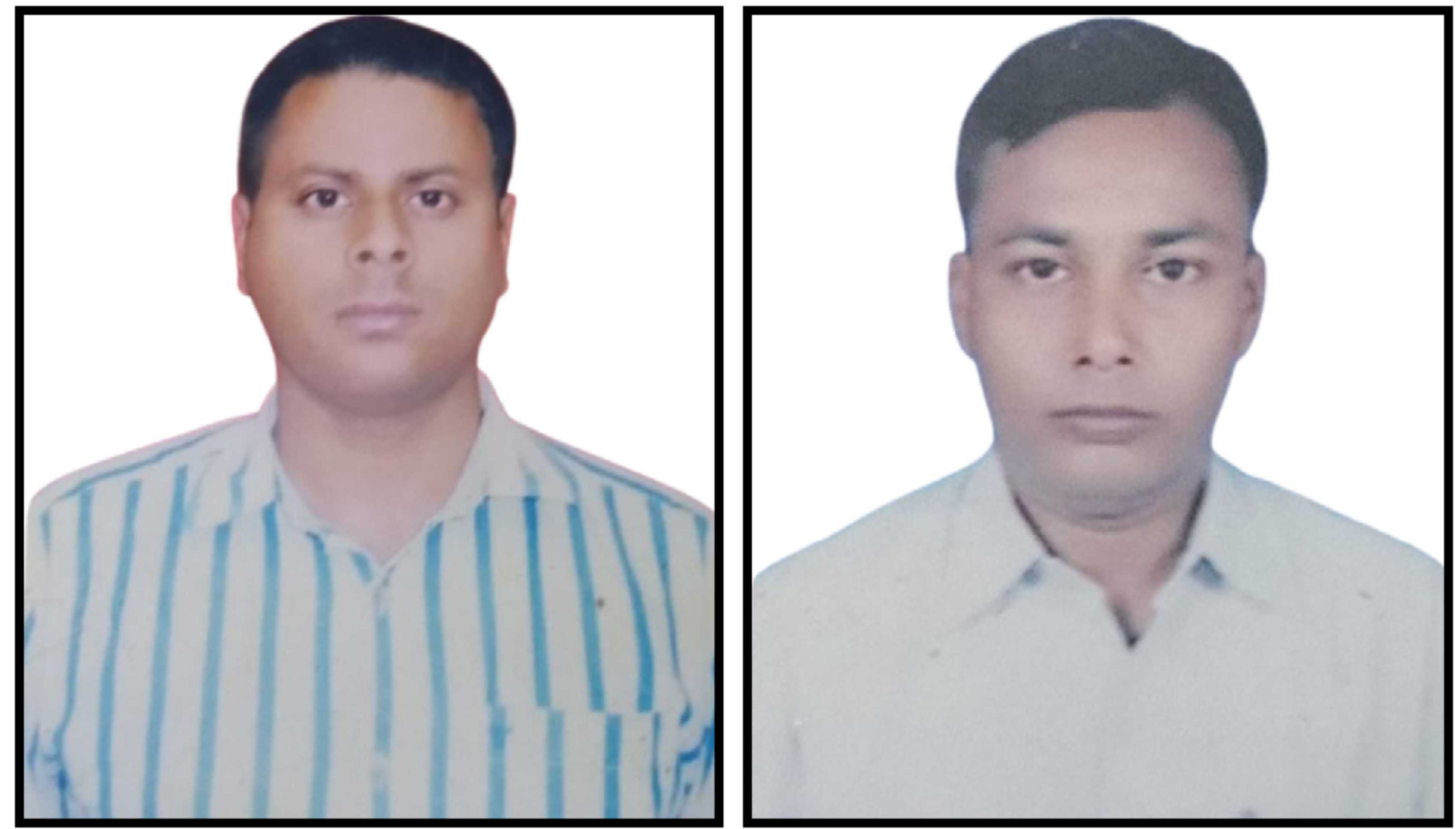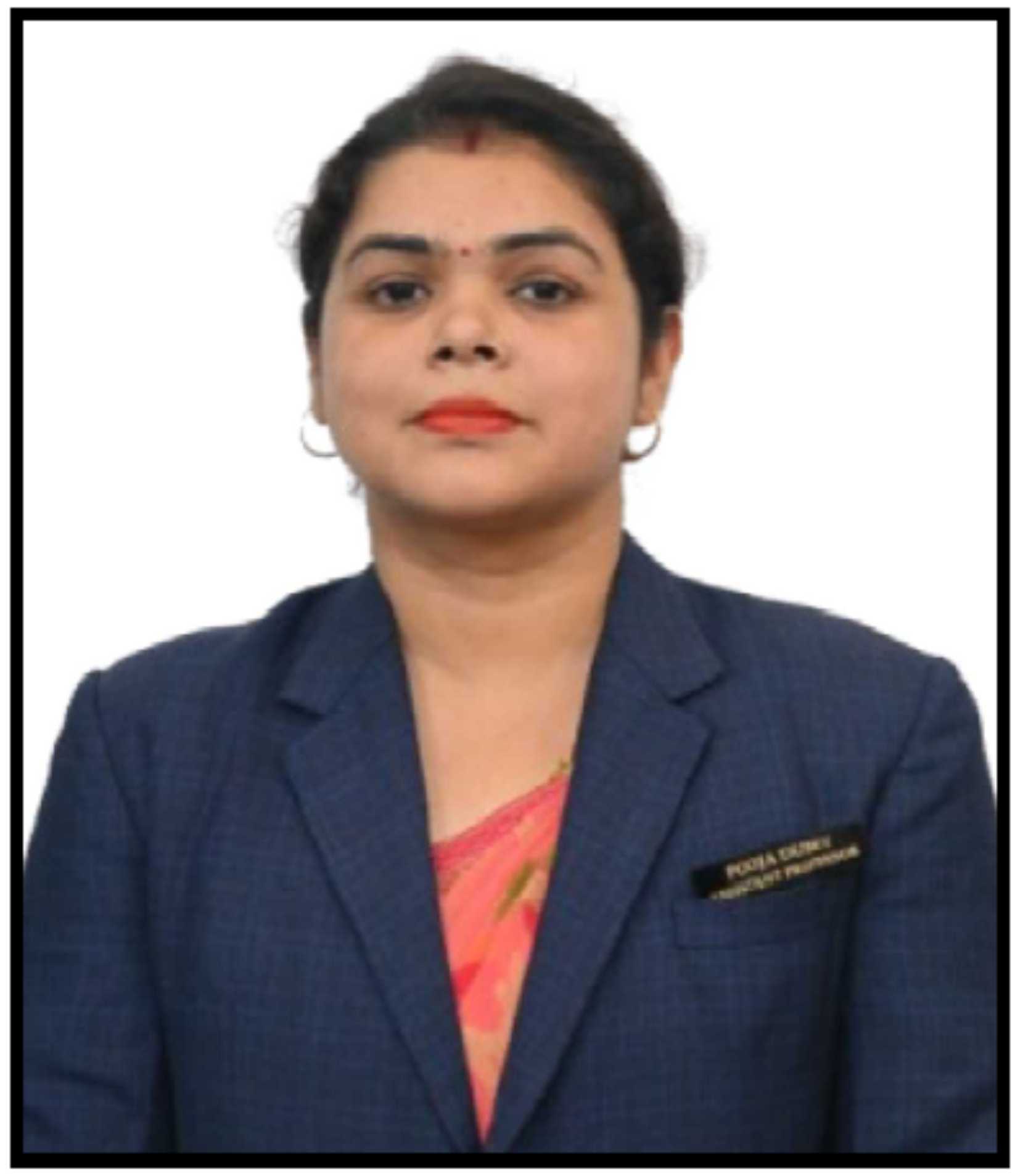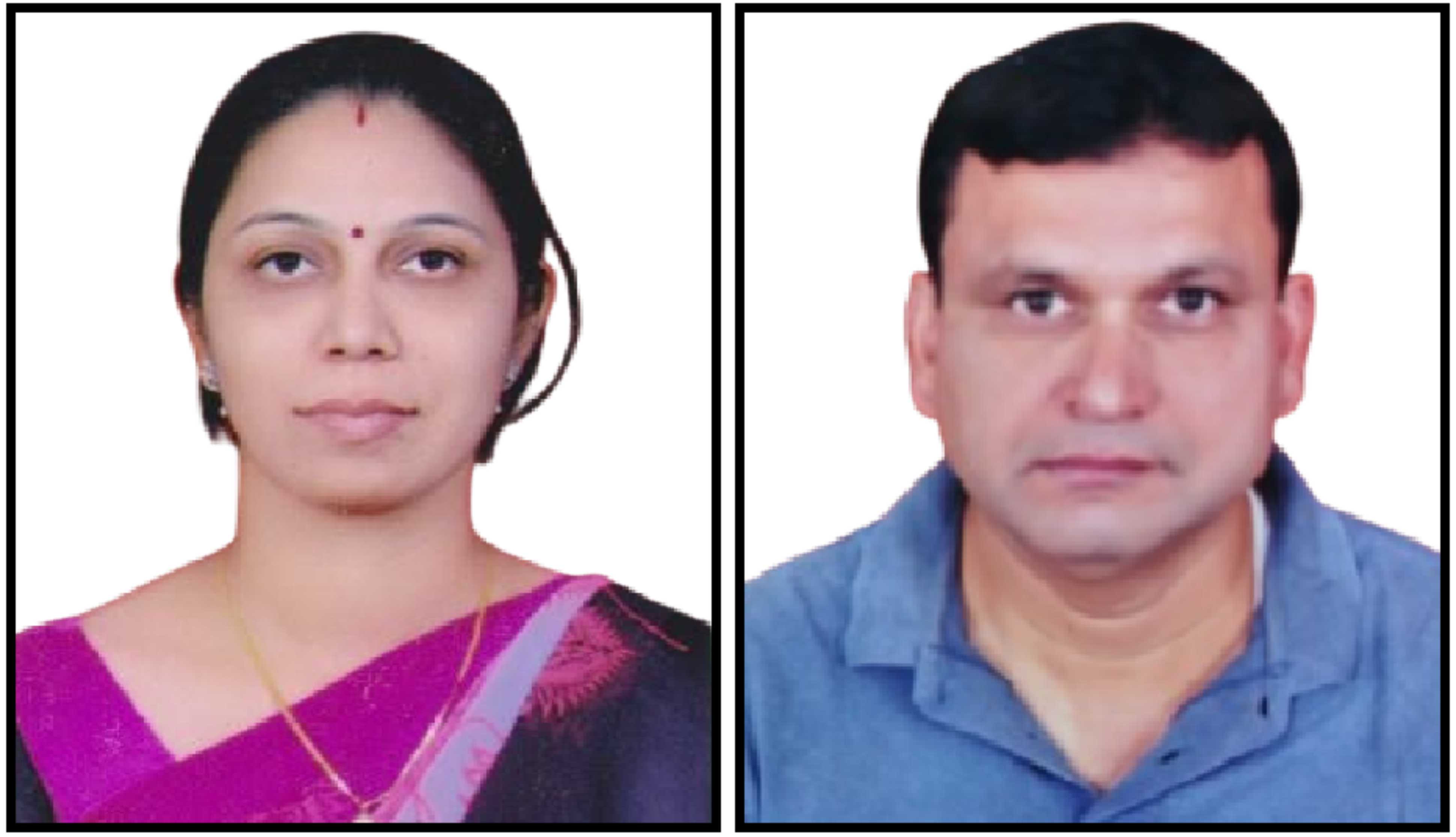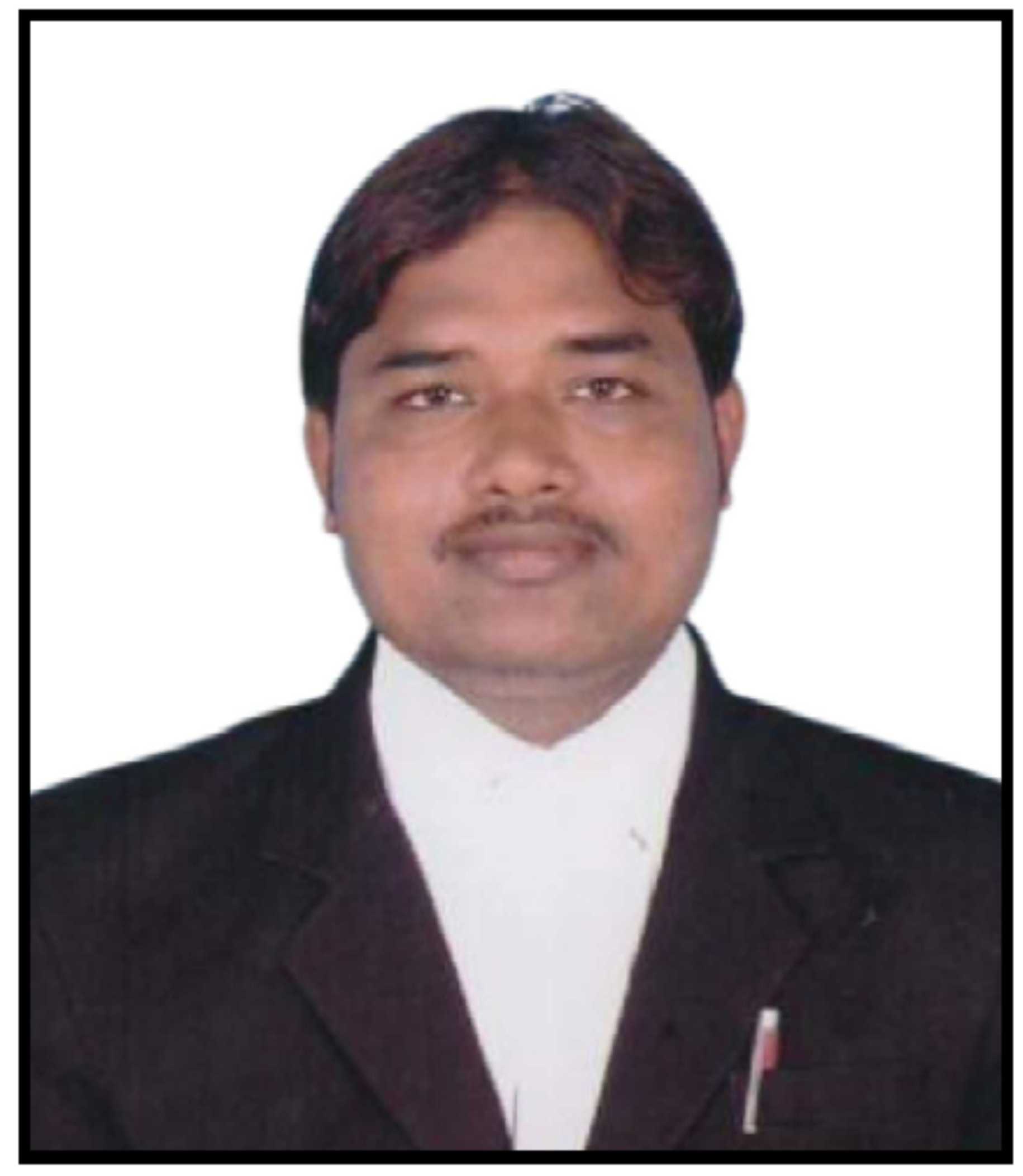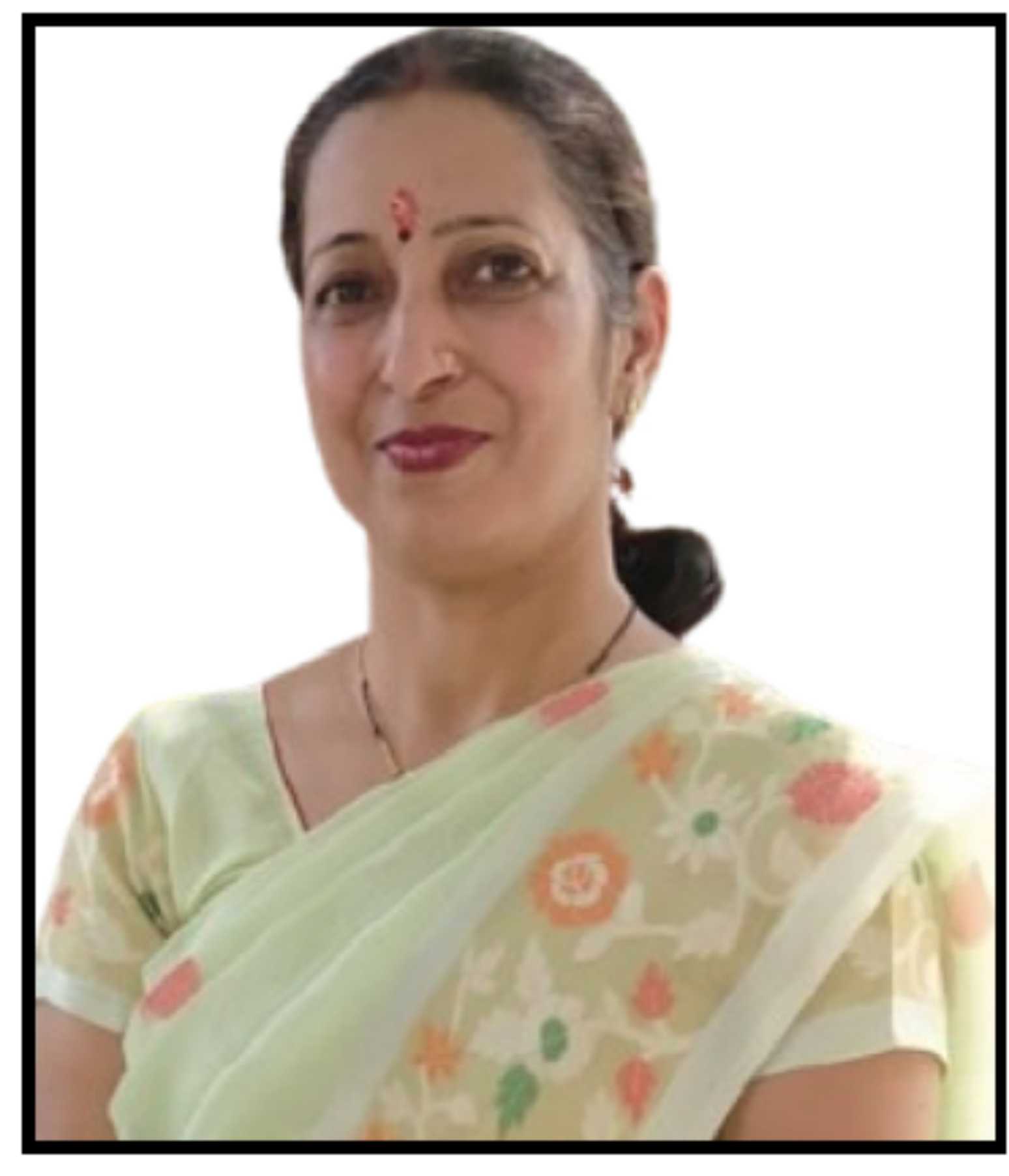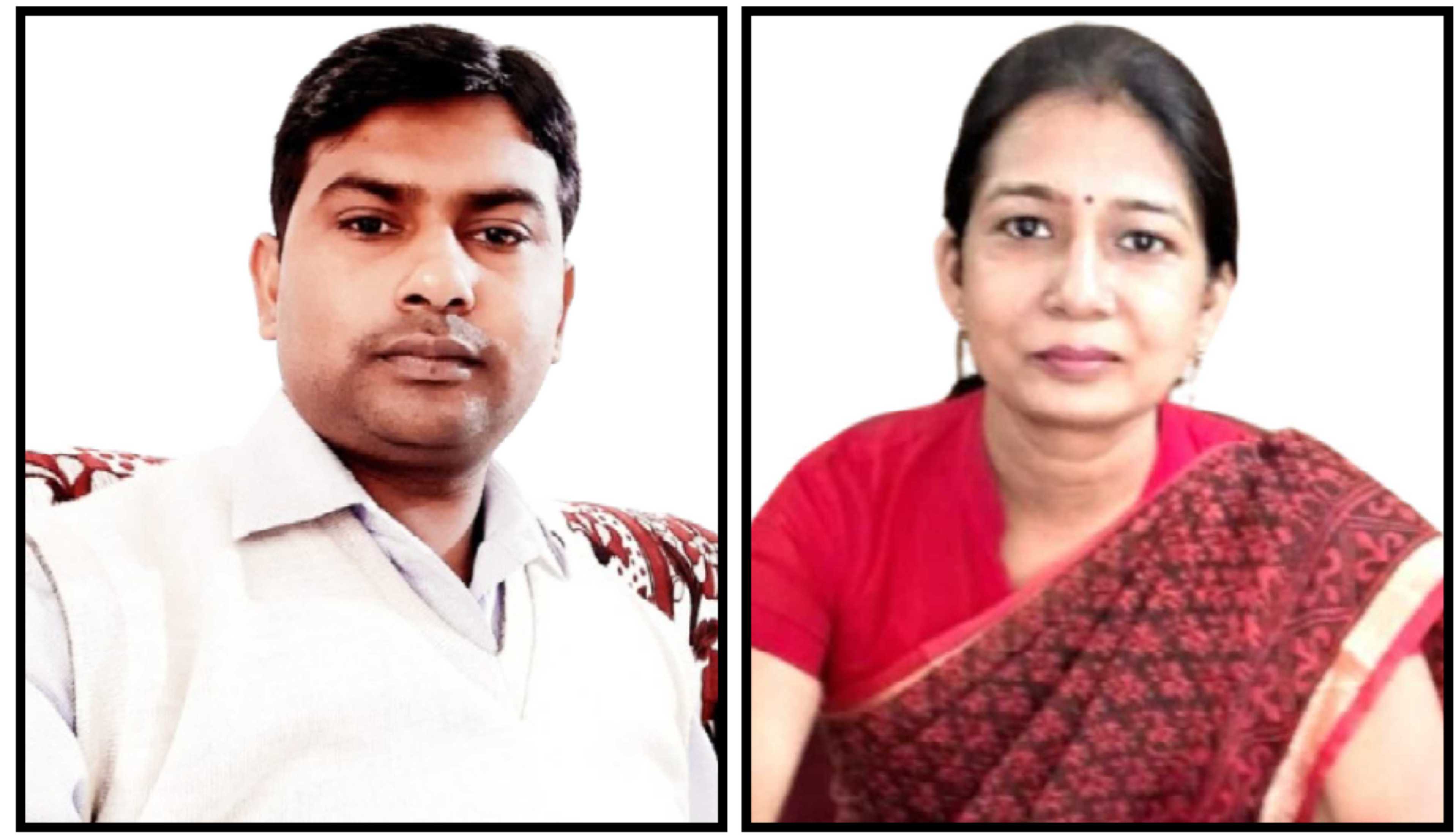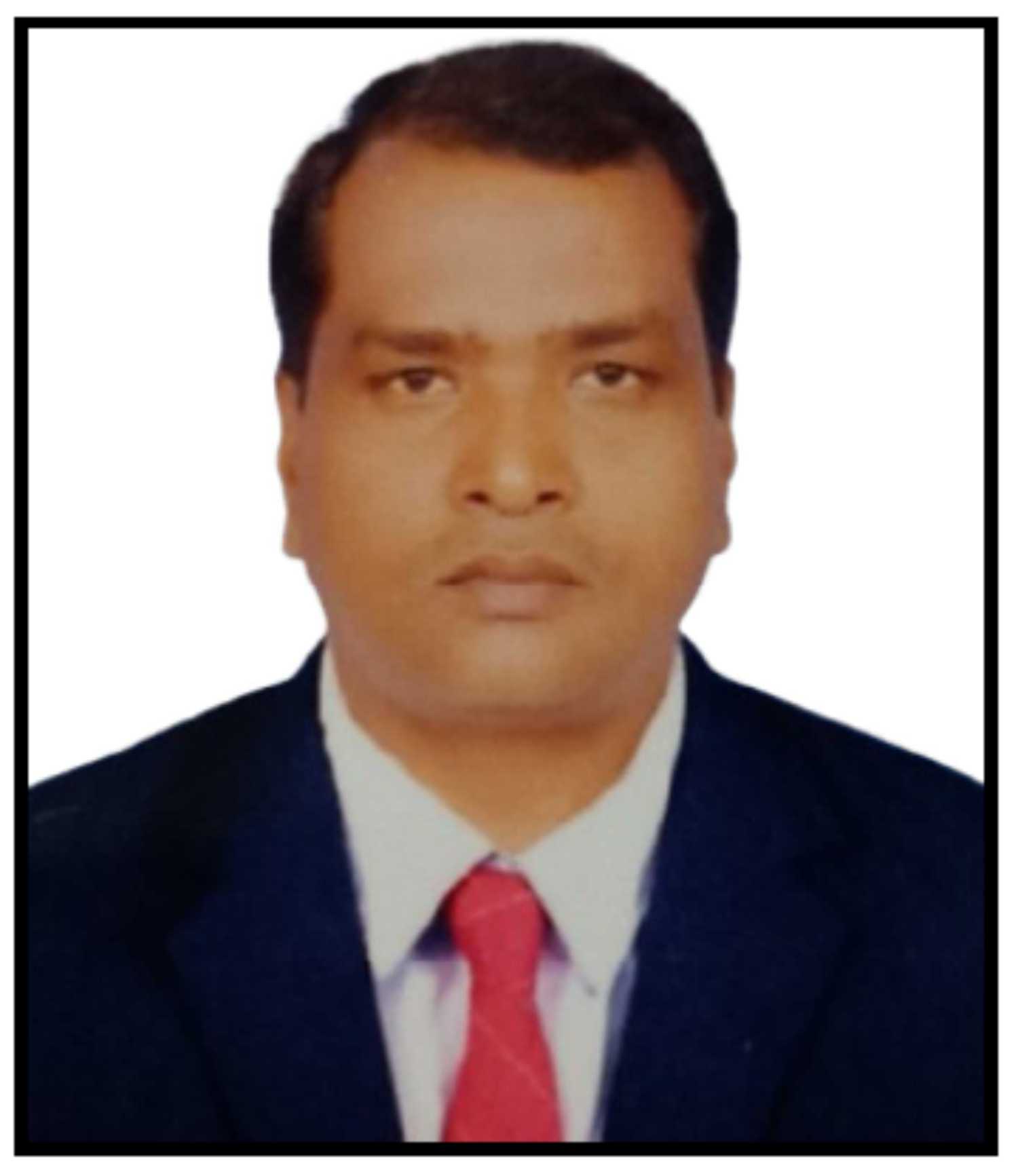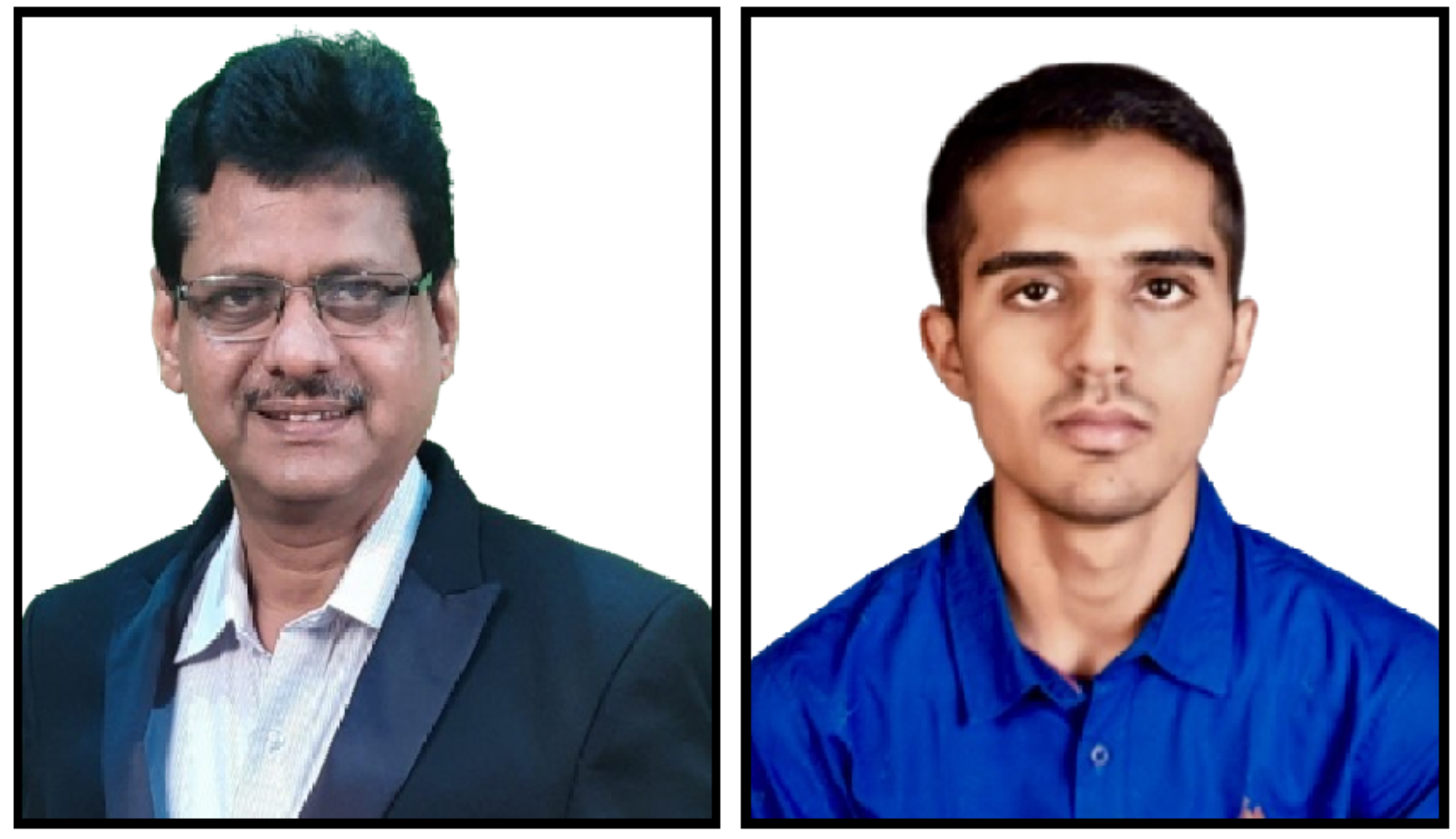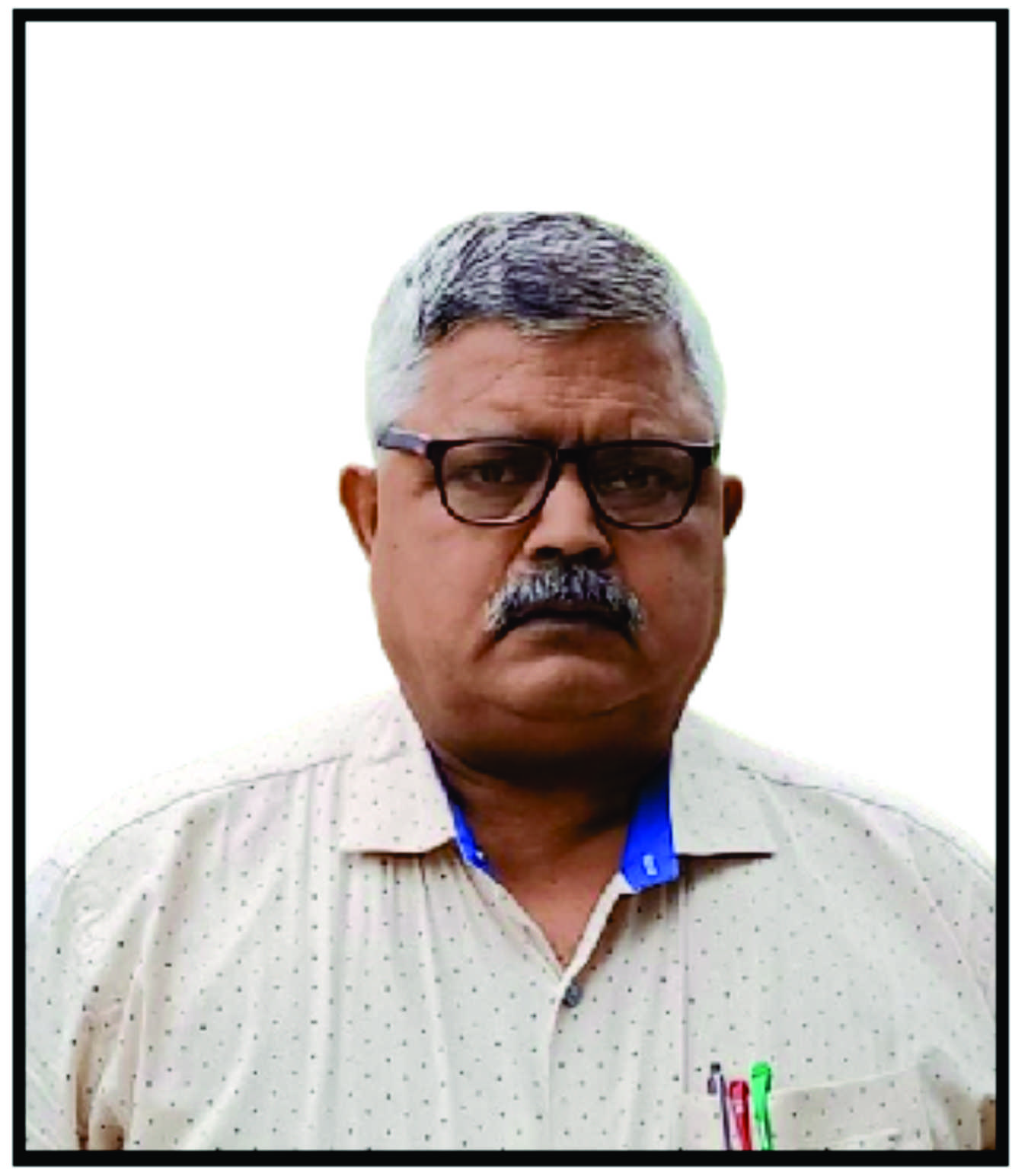- Call Us: +91 9425210308
- Email Us: amoghvarta@gmail.com
- RNI : CHHBIL/2021/80395
- ISSN : 2583-3189 (Online), 2583-0775 (Print)
Current Issue
Publishing Year : 2025
Read Abstract
वर्तमान समय में पर्यावरण संरक्षण और इसके प्रति जागरूकता की आवश्यकता पहले से कहीं अधिक बढ़ गई है। जलवायु परिवर्तन, वायु और जल प्रदूषण, वन्यजीवों के प्राकृतिक आवासों का विनाश और प्राकृतिक संसाधनों का अंधाधुंध दोहन जैसी समस्याओं ने वैश्विक स्तर पर चिंता बढ़ा दी है। ऐसे में, समाज के सभी वर्गों विशेषकर किशोर विद्यार्थियों में पर्यावरणीय चेतना विकसित करना अत्यंत आवश्यक हो गया है, क्योंकि वे भविष्य के नागरिक और निर्णयकर्ता हैं। यह अध्ययन धमतरी जिले के किशोर विद्यार्थियों में पर्यावरण जागरूकता के स्तर को समझने और उसका मूल्यांकन करने हेतु किया गया है। इस शोध में धमतरी जिले के विभिन्न विद्यालयों से छात्र और छात्राओं का चयन कर उनके पर्यावरण के प्रति दृष्टिकोण और जागरूकता का विश्लेषण किया गया। शोध कार्य का उद्देश्य छात्रों एवं छात्राओं की पर्यावरण के प्रति जागरुकता का अध्ययन करना है। जागरुकता जानने हेतु सर्वेक्षण विधि का प्रयोग किया गया। धमतरी जिले के विभिन्न विद्यालयों से 60 छात्र एवं 60 छात्रा का चयन यादृच्छिक विधि द्वारा किया गया। पर्यावरण जागरुकता मापन के लिए डॉ. प्रवीण कुमार झा द्वारा निर्मित Environment Awareness Ability Measure Revised 2008 Eam-J Hindi Version का प्रयोग किया गया। यह निष्कर्ष प्राप्त किया कि विद्यार्थियों के पर्यावरण के प्रति जागरूकता पर लिंग के आधार पर कोई सार्थक प्रभाव नहीं पड़ता है। जागरूकता के मध्यमान के आधार पर जागरूकता का स्तर औसत से ऊपर है। जागरूकता के स्तर को उच्च करने के लिये प्रयास करना होगा।
Read Keyword
पर्यावरण, जागरुकता, विद्यार्थी.
Read Reference
1. इंदूसेन (2024) उच्च माध्यमिक विदयालयों पर छात्रों की पर्यावरण जागरूकता का एक विश्लेषण, IJARIIE, Volume 10, Issue 02, भगवंत विश्वविद्यालय अजमेर, पृ. 155।
March To May
Read Abstract
This paper seeks to understand the interplay of hustle, resistance and the politics of respectability within the realm of digital Sex work, emphasising on how Sex workers navigate online platforms and applications amidst increasing surveillance, algorithmic bias, moral policing, and platform capitalism. Based on notes taken on the field and discussions with the stakeholders, it explores how marginalized bodies engage with technology to sustain livelihoods. The study highlights the digital hustle not just as economic necessity but as an act of everyday resistance against structural exclusions, particularly in the case of Sex work. It further questions the politics of visibility shaped by platform economies that create risks of criminalization and erasure. By understanding the experiences of digital sex workers in India, the paper argues for a more inclusive digital policy framework that acknowledges sex work as labor and emphasizes the need for a digitally just system.
Read Keyword
Hustle, Resistance, Digital Sex Work.
Read Reference
1. Ministry of Electronics and Information Technology (2022) https://www.meity.gov.in/, Accessed on 15/01/2025.
March To May
Read Abstract
मानववाद का दर्शन ब्रह्मांड, मानव तथा उसकी समस्याओं के विवेचन को सर्वाधिक महत्व देता है। लामोन्ट का मानववाद एक बहुआयामी दर्शन है। मानववाद का अर्थ इस प्राकृतिक विश्व में मानवता के सर्वाेच्च शुभ तथा बुद्धि, विज्ञान और लोकतंत्र के प्रवल समर्थन से है। मानववाद यह मानता है कि मानव अपनी समस्याओं के समाधान में स्वयं सक्षम है। यह सक्षमता विवेक तथा वैज्ञानिक सोच को साहस तथा दूरदृष्टि के साथ सामंजस्य स्थापित करने से आती है। मानववाद की नैतिकता समस्त मानवीय मूल्यों का स्त्रोत लौकिक मानता है। नैतिकता का उद्देश्य राष्ट्र, धर्म व नस्ल के आधार पर भेदभाव किए बगैर मानवीय सुख, स्वतंत्रता तथा प्रगति की प्राप्ति करना है। लामोन्ट का मानववाद विवेक तथा वैज्ञानिक विधि के पूर्ण सामाजिक क्रियान्वयन में विश्वास करता है। इसका लोकतांत्रिक प्रक्रिया, संसदीय शासन-प्रणाली, विचार एवं अभिव्यक्ति की स्वतंत्रता में अटूट विश्वास है, जो आर्थिक, राजनैतिक तथा सांस्कृतिक जीवन के सभी पक्षों को समाहित करता है। मानववादी नैतिकता में विचारों और क्रियाओं का अंतिम मानवीय हितों का संरक्षण है।
Read Keyword
मानववाद, प्रकृतिवाद, लोकतंत्र, लौकिक, नैतिकता.
Read Reference
1. लामोन्ट कॉर्लिस, (1997) दि फिलोसफि ऑफ ह्यूमेनिज्म, ह्यूमैनिस्ट प्रेस, एसमहर्स्ट न्यूयॉर्क, पृ. 12-15।
March To May
Read Abstract
Industry-academia collaboration in India has emerged as a pivotal mechanism for fostering innovation, skill development, and economic growth. This paper examines the dimensions of such collaborations, reflecting on their historical evolution, current landscape, and future prospects in the context of the National Education Policy (NEP) 2020. By analyzing successful case studies, challenges, and gaps in existing frameworks, the study highlights how NEP 2020’s emphasis on multidisciplinary education, research-driven learning, and industry-aligned curricula can bridge the divide between academic institutions and industries. The paper explores key aspects such as knowledge transfer, internship programs, joint research initiatives, and entrepreneurship ecosystems, while addressing barriers like misaligned priorities, funding constraints, and cultural differences. It proposes actionable strategies to strengthen partnerships, including policy incentives, public-private partnerships, and technology-driven platforms. The findings underscore NEP 2020’s transformative potential to reshape industry-academia synergies, paving the way for a skilled workforce, innovation hubs, and sustainable development in India’s knowledge economy.
Read Keyword
Industry-Academia Collaboration, National Education Policy 2020, Skill Development, Knowledge Transfer, Entrepreneurship, Public-Private Partnerships.
Read Reference
1. AICTE. (2022) Report on Implementation Challenges of NEP 2020, All India Council for Technical Education, Government of India, p. 12–45.
March To May
Read Abstract
The integration of gamification and interactive platforms in education has evolved into transformative strategies to improve engagement, motivation and student learning. In this article, we will explore how game-based learning elements and digital interactive tools have a positive impact on the educational experience. We highlight the effectiveness of a gamerized learning environment by reviewing current literature, case studies, and analysis of student performance metrics.
Read Keyword
Gamification, Interactive Platforms, Student Engagement, Educational Technology, Learning Outcomes.
Read Reference
1. Deterding, S.; Dixon, D.; Khaled, R.; & Nacke, L. (2011) From game design elements to gamefulness: Defining “gamification”. In Proceedings of the 15th International Academic MindTrek Conference: Envisioning Future Media Environments, p. 9–15, ACM, https://doi.org/10.1145/2181037.2181040, Accessed on 05/01/2025.
March To May
Read Abstract
किशोरावस्था संघर्ष एवं तूफान का काल माना जाता है। इस अवस्था में किशारों के संवेगों में स्थिरता नहीं रहती क्योकि इस समय उनमें कई शारीरिक और मानसिक परिवर्तन हो रहे होते है। भावनात्मक स्थिरता चार सोपानों से होकर गुजरती है:- अस्तित्व, सुरक्षा, सफलता और शांति। इसके लिये किशोर हमेशा तत्पर रहता है। इस दौरान किशोरो पर समाज में चल रहे दौर का प्रभाव भी देखने को मिलता है। कोविड-19 महामारी के दौरान हमने शिक्षा जगत में एक बहुत बड़ा परिवर्तन देखने को मिला वह था ई-लर्निंग का। ई-लर्निंग की सहायता से हम शिक्षण अधिगम प्रक्रिया को साकार करने का प्रयास कर रहे थे। ई-लर्निंग के माध्यम से हम किशोरों को नवीनतम जानकारी प्रदान कर शिक्षा को मनोरंजन और रोचक बनाने का कार्य करते है। ई-लर्निंग के माध्यम से जो छात्र स्थान परिवर्तन कर शिक्षा प्राप्त नहीं कर सकते उनके लिये बहुत लाभप्रद है। एक अच्छे कैरियर के निर्माण के लिय आज माता-पिता अपने बच्चों को ई-लर्निंग के द्वारा भी दुरस्थ शिक्षा पद्धति हेतु आकृष्ट करते है। शोध में हमने देखा किशोर ई-लर्निंग के माध्यम से किशोरों को सैद्धांतिक ज्ञान तो प्राप्त हो रहा है लेकिन व्यवहारिक ज्ञान से वह दूर होते चले गयें। किशोरों के आत्मसम्मान को बढाने और संवेंगों को परिपक्वता बनाने के लिए व्यवहारिक ज्ञान की आवश्यकता है जिससे वे अपने आप को किसी भी परिस्थिति में समायोजित कर सके।
Read Keyword
किशोर, सीखना, ई-लर्निंग.
Read Reference
1. शर्मा, देवकी नंदन (2017) शिक्षक प्रशिक्षक, महा. के छात्राध्यापकों की संवेगात्मक परिपक्वता का अध्ययन, International journal research thought, vol-5, Issue 1, p. 14-18, ISSN : 2320-2882.
March To May
Read Abstract
भारतीय संविधान के अनुच्छेद 25 से 28 के तहत धार्मिक स्वतंत्रता का अधिकार प्रदान किया गया है। इस अधिकार की व्याख्या और सीमा को सर्वाेच्च न्यायालय और विभिन्न उच्च न्यायालयों ने समय-समय पर अपने निर्णयों के माध्यम से परिभाषित किया है। न्यायालय ने यह सुनिश्चित किया है कि धार्मिक स्वतंत्रता के अधिकार का उपयोग व्यक्तिगत स्वतंत्रता और सार्वजनिक व्यवस्था के बीच संतुलन बनाते हुए किया जाए।
Read Keyword
धार्मिक स्वतंत्रता, धर्मनिरपेक्षता, संविधान, लोकतंत्र, सर्वाेच्च न्यायालय, उच्च न्यायालय.
Read Reference
1. https://hindi.ipleadera.in/freedom-of-religion-under-indian-constitution-2/, Accessed on 10/01/2025.
March To May
Read Abstract
यद्यपि अनुवाद का अध्ययन हाल के दिनों में एक प्रमुख विषय बनकर उभरा है, ‘अनुवाद’ का मुद्दा सभ्यता के प्रारंभिक चरण से ही मौजूद है। जब एक जाति या समूह दूसरी जाति या समूह के साथ एकीकृत होता है, तो यह दोनों के बीच सामाजिक, आर्थिक, वाणिज्यिक, राजनीतिक और सांस्कृतिक आदान-प्रदान में अनुवाद का प्रमुख योगदान रहता है। मात्र एक भाषा से दूसरी भाषा में रूपांतरण (ज्व तमदकमत । जमगज पद वदम संदहनंहम जव ।दवजीमत) को अनुवाद नहीं कहा जा सकता। यह भाषा, साहित्य, संस्कृति की अनेक प्रक्रियाओं का निर्धारक भी है। इस क्षेत्र में अनुवाद साहित्य का प्रसंग अधिक महत्वपूर्ण है।
Read Keyword
अनुवाद, अनुवादक, कलात्मक अनुभूति, समीक्षा ग्रन्थ, ओड़िआ भाषा-साहित्य.
Read Reference
1. मिश्र, श्रीनिबास (2024) आधुनिक ओड़िआ गद्य साहित्य, बिद्यापुरी, कटक, ओड़िशा।
March To May
Read Abstract
This paper presents the results of a bibliometric analysis titled “Bibliometric Analysis of Research on Rice in Chhattisgarh” for the period 1997–2024. The data were retrieved from direct searches in the J-Gate Plus Database (https://www.jgateplus.com) using the query “Rice research in Chhattisgarh.” Various bibliometric indicators were applied to assess the growth and current status of research output on this subject. The study aims to analyze the research trends in Rice research in Chhattisgarh, focusing on key bibliometric aspects such as: Distribution of Publications, Authorship Patterns and Contributions (Single vs. Multi-author contributions), Degree of Collaboration, Affiliation of Contributors, Geographical Distribution of Articles, Geographical Distribution of Research Journals, Publisher-wise Distribution of Articles. This analysis provides valuable insights into the research landscape of rice studies in Chhattisgarh, highlighting publication trends and collaboration patterns.
Read Keyword
Bibliometrics, Scientometrics, Authorship Pattern, Degree of Collaboration, Geographical Distribution, Rice Research.
Read Reference
1. Amin, Jignesh; and Parekh, Yogesh R.(2019) Scientometric Analysis of the Research Output of Biochemistry, Genetics and Molecular Biology of Gujarat University, Ahmedabad. Library Philosophy and Practice (e-journal). 2633.
March To May
Read Abstract
In India, mixed farming and cattle raising is an essential segment of rural life and these practices relate to the social structure in cultural, religious, and economic ways. India’s production of fodder is very unevenly distributed and how this resource is used depends on the breed of cattle raised, the climate, the socioeconomic context and the crop-growing patterns. Fodder production in India is a critical component of sustainable livestock farming, which supports the livelihoods of millions of farmers and contributes significantly to the agricultural economy. Despite India being one of the largest producers of milk and livestock, fodder availability remains inadequate due to shrinking land resources, climate variability, and inefficient management practices. The country faces a green fodder deficit of about 35% and a dry fodder shortage of around 11%, affecting dairy and meat productivity. Major fodder crops include cereals like maize, sorghum, and bajra, as well as legumes such as berseem, lucerne, and cowpea. Cultivation practices vary across agro-climatic zones, with irrigated regions favouring high-yielding varieties, while rain-fed areas rely on traditional drought-resistant crops. Government initiatives like the National Livestock Mission and Rastriya Krishi Vikas Yojana (RKVY) promote fodder development through subsidies, improved seed distribution, and silage production techniques. Challenges in fodder production include land degradation, water scarcity, and lack of awareness about modern fodder management. Sustainable solutions such as hydroponic fodder, agroforestry systems, and crop residue utilization are being explored to enhance productivity. Strengthening research, extension services, and policy support is essential to bridge the demand-supply gap and ensure nutritional security for India’s livestock sector.
Read Keyword
Fodder Production, Challenges, Types of Fodder, Seasonal Fodder, Recommendations Technique.
Read Reference
1. Bhagmal, Singh, K.A.; Roy, A.K.; Ahmad, Shahid; Malaviya, D.R. (2009) Forage Crops and Grasses. In: Handbook of Agriculture, Directorate of Information and Publications of Agriculture, Indian Council of Agricultural Research, New Delhi, India, p. 1353-1417.
March To May
Read Abstract
साहित्य मनुष्य के चितवृत्ति को प्रफुल्लित ही नहीं करता यह जीवन का विस्तृत विश्लेषण, परिष्करण एवं मानव मन का शुद्धिकरण भी करता है। प्राचीन काल से लेकर वर्तमान युग के समाज का चित्रण साहित्य में ही तो दृष्टिगोचर होता है। समाज के चित्रण को आधार बनाकर आचार्य रामचंद्र शुक्ल हिंदी साहित्य के इतिहास में लिखते हैं कि ‘‘प्रत्येक देश का साहित्य वहां की जनता की चितवृत्ति का संचित प्रतिबिंब होता है।‘‘1 साहित्य की समस्त विधाओं में उपन्यास सारगर्वित, प्रासंगिक एवं लोकप्रिय विधा है। इस लोकप्रिय विधा को आधार बनाकर हिंदी साहित्य के मूर्धन्य उपन्यासकारों ने उच्च शिक्षा से अनुप्राणित हिंदी उपन्यासों में जहां एक ओर अध्यापक वर्ग के उच्च आदर्श, संघर्ष, बौद्धिकता, नैतिकता एवं कर्तव्यनिष्ठता का चित्र अंकित किया है, वहीं दूसरी ओर उच्च शिक्षण संस्थानों में कार्यरत प्रोफेसरों की आचरणहीनता, पदलोलुपता, नैतिक पतन, भ्रष्टाचार, गुंडागर्दी जैसी तमाम विसंगतियों की जो कटु आलोचना की है वह समाज के लिए एक आईना है। भारतीय शिक्षा आज से नहीं प्राचीन काल से विश्वसनीय एवं पूजनीय रही है, जो विद्यार्थियों के अंतःकरण का परिमार्जन कर उन्हें समाजोन्मुखी एवं सभ्य नागरिक बनाने का कार्य करती है। यह दुरूह कार्य अध्यापकों के मार्गदर्शन से ही संभव है। भारत के संत मनीषयों ने भी गुरु को सर्वोच्च स्थान पर प्रतिष्ठित किया है। महान समाज सुधारक संत कबीर दास जी ने अपने काव्य में गुरु को ईश्वर से भी ऊँचा स्थान दिया है। शिक्षक राहों के अन्वेषी एवं पथ प्रदर्शक होते हैं। वे अपने ज्ञान के प्रकाश से विद्यार्थियों के जीवन को आलोकित कर राष्ट्र निर्माण में अतुलनीय योगदान देते हैं। समाज के परिदृश्य को बदलने में शिक्षक महती भूमिका के रूप में अपनी सेवाएं प्रदान करते हैं, किंतु वर्तमान समय में उच्च शिक्षण संस्थानों में कार्यरत अध्यापकों की छवि पर जो प्रश्न चिन्ह उठते हैं वह अति चिंतनीय है। विश्वविद्यालय परिसर में जहां एक ओर ऐसा अध्यापक वर्ग है जो छात्रों के भविष्य को लेकर चिंतित एवं सजग है। वह विद्यार्थियों में जीवनपयोगी मूल्यों का विकास कर उन्हें जिम्मेदार एवं सभ्य नागरिक बनाने के लिए संकल्पित है। वहीं दूसरी ओर एक वर्ग ऐसा भी है जो राजनीति, भ्रष्टाचार, परिवारवाद, जातिवाद, नैतिक पतन, आचरणहीनता जैसी तमाम विसंगतियों में पड़कर छात्रों के जीवन को अंधकार के गर्त में डुबोने के साथ-साथ विश्वविद्यालय की गरिमा को भी ठेस पहुंचा रहा हैैं। उपरोक्त दोनों स्थितियों के संदर्भ में जहां एक वर्ग को राष्ट्रीय एवं अंतर्राष्ट्रीय स्तर पर पुरस्कृत कर प्रोत्साहन देने की आवश्यकता है, वहीं दूसरे वर्ग पर अनुशासनात्मक कार्यवाही कर सुधार करने की। शोधार्थी का यह शोध पत्र उच्च शिक्षा से अनुप्राणित हिंदी उपन्यासों में अभिव्यक्त अध्यापक वर्ग की वर्तमान स्थित को संदर्भित करने के साथ-साथ प्रेरणादायक एवं विचारोत्तेजक पहलुओं को भी उठाता है।
Read Keyword
शिक्षा, उपन्यास, विश्वविद्यालय, संस्थान, अध्यापक.
Read Reference
1. शुक्ल, आचार्य रामचंद्र (2002) हिंदी साहित्य का इतिहास, लोक भारती प्रकाशन, प्रयागराज, पृ.1।
March To May
Read Abstract
आज एक विशाल भू-भाग की भाषा बन जाने के कारण हिंदी भारत की संपर्क भाषा का स्थान ले रही है। संवैधानिक तौर पर यह भारत संघ की राजभाषा तो है परंतु इसे अनेक हलकों से राष्ट्रभाषा घोषित किए जाने की भी मांग उठ रही है। कोई भी भाषा तभी जीवंत रह सकती है या किसी भाषा को तभी विस्तार मिल सकता है जब उसमें अन्य भाषाओं के शब्दों और शैलियों को भी ग्राह्य करने की भरपूर क्षमता हो। हिंदी में स्वाभाविक रीति से बंगला, गुजराती, मराठी, उड़िया, असामिया, तमिल, तेलुगू, कन्नड़ एवं मलयालम के अनुवाद रूप के मुहावरे एवं बहुप्रचलित शब्द अपने आप आते जा रहे हैं। अँग्रेजी के अनेक मुहावरों के अनुवाद हिंदी में समाहित हो गए हैं। इसमें तो कोई संदेह ही नहीं है कि पहाड़ी, राजस्थानी, मैथिली, मगही एवं भोजपुरी के शब्द एवं मुहावरे हिंदी में स्वाभाविक रूप से प्रयुक्त होकर हिंदी को समृद्ध बना रहे हैं। वस्तुतः यह एक स्वाभाविक प्रक्रिया है, कह लें कि भाषा का स्वाभाविक गुण है। यह ऐसा गुण है जिसके अभाव में भाषा विशेष के प्रयोक्ता में निरंतर कमी आने लगती है, भाषा प्रायः समाप्त भी हो जाती है। इस शोधालेख का मूल ध्येय है हिंदी के विकास में भोजपुरी शब्दों, मुहावरों और उसकी शैलियों के योगदान का मूल्यांकन करना।
Read Keyword
हिंदी, भोजपुरी, भारत, भाषा.
Read Reference
1. मिश्र, कृष्णविहारी (1981) बेहया का जंगल, साहित्य अकादमी, नई दिल्ली।
March To May
Read Abstract
The present study was undertaken mental health and stress among divorce and non- divorce women. As a result, measurements and comparisons of the relationships between stress and mental health were made systematically for both divorce and non- divorce women. The Mental Health Questionnaire (MHQ) and the Perceived Stress Scale (PSS) were given to 75 divorce and 75 non-divorce women in Bihar who were available for selection. The data were analyzed using the t-test and product-moment correlation (r). The following are the outcomes: There was a substantial difference seen in the mean mental health ratings of divorce and non- divorce women. There was a discernible difference in the mean stress ratings of divorce and non- divorce women. A significant positive relationship between mental health and stress of divorce women was obtained. A significant positive relationship between mental health and stress of non-divorce women was work out. The goal of the study is to increase the awareness of divorce women about the many types of stressors and coping mechanisms that can help them better manage their stress and deal with mental health issues.
Read Keyword
Mental Health, Stress, Divorce women, Non- divorce women.
Read Reference
1. Caplan, R. (1971) Organizational stress and individual strain: A social-psychological study of risk factors, Unpublished doctoral dissertation, University of Michigan, Ann Arbor.
March To May
Read Abstract
Dawle Kujur is a great poet of Kurukh literature of the Oraon tribe. Dawle Kujur has such an intense personality that he is regarded as the greatest writer of Kurukh language and literature of the Oraon tribe. He holds the highest position among the kurukh poets of his time. His poetry resonates with the realities of life and the intricacies of love. He portrays nature as a lover and beloved and he has portrayed the poignancy of love very deeply delving into the themes of fantasy, separation, frustration, terror and depression of love. This paper explores the realistic love found in the poems of Dawle Kujur’s Munta Poonp Jhumpa (Bunch of First Flowers).
Read Keyword
Dawle Kujur, Ideal Love, Agony of love, Stressed Love, Love for Nature.
Read Reference
1. Bless, C. (1965) An English-Uraon Dictionary, Dharmik Sahitya Samiti, Manresa House, Ranchi.
March To May
Read Abstract
मानवीय जीवन ईश्वर की सर्वश्रेष्ठ कृति है, जिसमें दो पहलू है - जैविक तथा सामाजिक। जहाँ भोजन तथा जैविक क्रियायें जीवन को बनाये रखने तथा बढ़ाने के लिये आवश्यक हैं। वहीं शिक्षा सामाजिक जीवन एवं सर्वांगीण विकास के लिये चरम आवश्यक है। आज वर्तमान में इन्टरनेट की सहायता से ही पृथ्वी पर वास्तविक रूप में ‘वसुधैव कुटुम्बकम्’ की भावना चरितार्थ हो रही है, वहीं शिक्षा के क्षेत्र में भी इन्टरनेट अपना बहुत योगदान दे रहा है। यदि प्राचीन समय की शिक्षा प्रणााली या शैक्षिक गतिविधियाँ की बात की जाये तो वह शिक्षा मात्र व्यवहारिक ज्ञान एवं पुस्तकीय ज्ञान तक ही सीमित थी लेकिन वर्तमान संदर्भ में बालक शिक्षा ग्रहण करने में सबसे ज्यादा विश्वसनीय इन्टरनेट की मानता है। वह शिक्षक के द्वारा प्रदान किये गये ज्ञान के अलावा इन्टरनेट द्वारा प्राप्त सूचनाओं को ज्यादा सत्य एवं विश्वसनीय मानता है। प्रस्तुत अध्ययन में शोधकर्ता ने ‘‘विभिन्न इन्टरनेट सुविधाओं का विद्यार्थियों शैक्षिक व शारीरिक जीवन पर पड़ने वाले प्रभाव का अध्ययन’’ विषय पर शोध किया। शोध प्रबन्ध से प्राप्त निष्कर्षो से यह कहा जा सकता है कि विभिन्न इन्टरनेट सुविधाओं का विद्यार्थियों के शैक्षिक व शारीरिक जीवन पर सकारात्मक प्रभाव पड़ता है।
Read Keyword
इन्टरनेट, शैक्षिक जीवन, शारीरिक जीवन, बौद्धिक क्षमता, विद्यार्थी.
Read Reference
1. अस्थाना, बिपिन; एवं अस्थाना, श्वेता (2005) मनोविज्ञान और शिक्षा में मापन एवं मूल्यांकन, विनोद पुस्तक मंदिर, आगरा - 2।
March To May
Read Abstract
The National Education Policy of 2020 (NEP 2020) was recently adopted by the Indian Government to implement major reforms in the country’s educational system and establish “India as a global knowledge superpower,” replacing the 34-year-old National Policy on Education (NPE), which was framed in 1986. This present study looks at the put Forword evaluation and assessment in the National Education Policy (NEP) 2020 and their feasible outcomes on the Indian Education System in various level. The NEP 2020 focuses on the development and support of technological tools in education for better learning outcomes. This policy emphasizes the important of multi-dimensional evaluation and assessment system. It has introduced several changes to the evaluation and assessment system in India, including a shift away from traditional exam-based evaluation. Traditional test can place a lot of emphasis on a student’s achievement in a single examination, which cannot give a complete picture of their academic potential. This present study is a respectful attempt to emphasize the proposed changes made in the area of evaluation and assessment system proposed in NEP 2020 to that of previous policies. The nature of paper descriptive and analytical nature, the study depends on both type primary and secondary data different views of experts, review of literature, policy documents and empirical data.
Read Keyword
Assessment, Evaluation, Indian Education system, NEP (2020), Examination System, School Based Assessment (SBA).
Read Reference
1. Document on National Policy on Education 1986: https://www.education.gov.in/sites/upload_files/mhrd/files/upload_document/npe.pdf, Accessed on 22/10/2024.
March To May
Read Abstract
Artificial Intelligence (AI) has transformed marketing automation by enhancing customer interactions, optimizing campaigns, and improving decision-making processes. This paper explores how AI-powered tools, such as chatbots, predictive analytics, and personalized recommendations, are reshaping digital marketing. It also examines the benefits, challenges, and future implications of AI-driven marketing automation. Artificial Intelligence (AI) is revolutionizing the field of marketing automation by streamlining customer interactions and optimizing campaign performance. This paper examines the transformative role of AI technologies—such as chatbots, predictive analytics, and personalized content generation in enhancing digital marketing strategies. By leveraging extensive data analysis and machine learning algorithms, AI not only improves the efficiency of targeting and customer engagement but also facilitates more precise and adaptive marketing solutions. The discussion includes an evaluation of the benefits, challenges, and ethical considerations associated with the widespread adoption of AI in marketing, ultimately providing insights into future trends and potential developments in this dynamic sector.
Read Keyword
Artificial Intelligence, .Market, Automation, Customer.
Read Reference
1. Boozary, Payam; Hosseini, Iman; Pourmirza, Mobina; Tanhaei, Hamed Ghorban; and Sheykhan, Sogand (2024) The impact of marketing automation on consumer buying behavior in the digital space via artificial intelligence. Power System Technology 48 (1), 1008-1021.
March To May
Read Abstract
समाज जीवित व्यक्तियों का समूह है जो अपने विचारों, मूल्यों व गतिविधियों में हमेशा गतिशील रहता है। यही समाज शिक्षा का संगठन अपनी आवश्यकताओं की पूर्ति के लिए करता है। जब समाज की आवश्यकताएं एवं आकांक्षाएं बदलती हैं तो शिक्षा की नई नीति निर्धारित की जाती है। वर्तमान समय में संपूर्ण राष्ट्र के विकास की अवधारणा एवं सभी तक गुणवत्तापूर्ण शिक्षा की पहुंच समाज की विशिष्ट आवश्यकता है। लोकतांत्रिक सरकारें भी इस दिशा में योजना पूर्ण विकास का कार्य कर रही हैं। समता, विविधता और समावेशन समाज की विशिष्ट आवश्यकता एवं उन्नयन पर प्रकाश डालते हैं। समता इस तथ्य पर प्रकाश डालती हैं कि सभी को समान अवसर और संसाधन उपलब्ध कराए जाएं क्योंकि शैक्षिक संस्कार समाज को सभ्य बनता है’। शिक्षा और समाज के परिप्रेक्ष्य में समता, विविधता और समावेशन एक व्यापक समदर्शी भाव अपने में समाहित किए हुए हैं। भारतीय दृष्टिकोंण के साथ-साथ आज वैश्विक समझ की जो विचारधारा संयुक्त राष्ट्र संघ, यूनेस्को और यूनिसेफ द्वारा विकसित की जा रही है, वह समता एवं समावेशन द्वारा समग्र विकास, प्रगतिशील विकास तो करेगी ही इसके साथ जो समाज का दबा-कुचला, शोषित- वंचित और पिछड़ा समाज है, उनमें शैक्षिक विकास के तहत अलगाव, विरोध, टकराहट, तनाव जैसी गतिविधियां कम होगी। उपरोक्त समाज को आवश्यकतानुसार अवसर एवं सुविधायें उपलब्ध कराकर शैक्षिक उद्देश्यों की पूर्ति ही नहीं बल्कि आम जनमानस एवं राष्ट्रीय हित को संरक्षित करने हेतु सद्भावपूर्ण विचार, करुणा,सहयोग, अहिंसा और भ्रातृत्व जैसे सद्गुण और विचार भी पैदा होंगे जो संपूर्ण जगत में भारत को विकसित करने एवं विश्व गुरु बनने का परचम लहराने का कार्य करेगा। इसलिए समतामूलक कार्य शैली, विविधता का सकारात्मक दृष्टिकोंण, एकत्व की भावना एवं समावेशन द्वारा सभी लोगों को एक साथ रहकर जीवन की उच्चता की ओर गमन करते हुए सबको गले लगाने पर विशेष जोर देना अपरिहार्य है।
Read Keyword
नियमित कक्षा, दृष्टिकोंण, समतामूलक, समरसता, सहिष्णुता, विविधता.
Read Reference
1. पचौरी, गिरीश (2013) उदीयमान भारतीय समाज में शिक्षक, इंटरनेशनल पब्लिशिंग हाउस, मेरठ।
March To May
Read Abstract
शिक्षक की उत्कृष्टता उसके शिक्षण के तरीके पर पूर्णतया निर्भर करती है। यही बात बच्चों की नजरों में शिक्षक को आदरणीय और पसंदीदा बना जाती है। अपने अध्यापन के दौरान आजकल यह बात समझ में आती है कि बढ़ते सोशल मीडिया के प्रभाव के कारण और कोविड काल 2019-20 से बच्चों में बच्चों के बचपन को बचपन की पहचान बनाने वाली चीज कहीं खो सी गई है, जैसे- सरलता, रोचकता, चंचलता, मस्ती, शैतानी। आज बच्चों की कल्पना शक्ति, कल्पना को अनुभव करके रोमांचित होना, शारीरिक गतिशीलता, लिखने की क्षमता में कमी लगातार दिखाई दे रही है। इसका प्रभाव ये हो रहा है कि बच्चों में त्वरित निर्णय लेने की क्षमता के साथ-साथ कार्य कौशल, स्मृति, मदद करना जैसे गुण बिल्कुल दिखाई नहीं देते हैं। अपनी शॉर्ट मेमोरी के कारण उनमें झल्लाहट, बैचैनी और धैर्य की कमी दिखाई देती है। शिक्षा एक ऐसा माध्यम है जिसके द्वारा बच्चों के व्यक्तित्व को पूरी तरह बदला जा सकता है। एक उत्कृष्ट शिक्षक के कार्य को उत्कृष्ट (टी.एल.एम.) शिक्षण सहायक सामग्री प्रभावशाली बना सकते हैं। उनके द्वारा प्राप्त ज्ञान रोमांचक, आनंद दायक और स्थाई होने के साथ-साथ विद्यालय में नामांकन का स्तर बढ़ाने में भी प्रभावशाली भूमिका निभाता है। बच्चों में विद्यालय से पलायन करने की भावना कम होती जाती है।
Read Keyword
उत्कृष्टता, क्षमता, कार्य कौशल, त्वरित, रोमांचित.
Read Reference
1. https://wordpress.com, Sep. 2021, Accessed Date 08/09/2024.
March To May
Read Abstract
इंद्रावती राष्ट्रीय उद्यान, छत्तीसगढ़ के बीजापुर जिले में स्थित एक महत्वपूर्ण जैव विविधता क्षेत्र है। यह क्षेत्र प्राकृतिक संसाधनों की समृद्धता के लिए प्रसिद्ध है, लेकिन साथ ही यह माओवादी गतिविधियों से भी प्रभावित रहा है। घने जंगलों और दुर्गम भूगोल के कारण यह क्षेत्र माओवादियों के लिए एक सुरक्षित आश्रय स्थल बन चुका है, जिससे राज्य सरकार के लिए प्रशासनिक नियंत्रण स्थापित करना चुनौतीपूर्ण हो गया है। शोध में यह अध्ययन किया गया है कि किस प्रकार माओवादी संगठन स्थानीय जनजातीय समुदायों को प्रभावित करते हैं और किस प्रकार राज्य सरकार उनको मुख्यधारा में वापसी के लिए विभिन्न विकास एवं पुनर्वास योजनाएँ चला रही है। सुरक्षा बलों द्वारा चलाए जा रहे अभियानों, बुनियादी ढांचे के विकास, आत्मसमर्पण नीतियों और सामाजिक सुधार कार्यक्रमों की प्रभावशीलता का मूल्यांकन किया गया है। यह शोध पत्र माओवाद और राज्य सरकार के बीच चल रहे संघर्ष का विस्तृत विश्लेषण प्रस्तुत करता है।
Read Keyword
इंद्रावती राष्ट्रीय उद्यान, माओवाद, राज्य सरकार, नियद नेल्लानार योजना, आतंरिक सुरक्षा.
Read Reference
1. https://cgwcd.gov.in/, Accessed on 20/01/25.
March To May
Read Abstract
Child labor continues to be a significant social issue in India, particularly in the economically disadvantaged regions of Eastern Uttar Pradesh (U.P.). This study explores the nature and extent of exploitation faced by working girl children in this region. The research is based on primary data collected from 100 respondents, including child laborers, parents, and social workers. The study examines the socio-economic factors leading to child labor, the nature of exploitation, and the effectiveness of existing social work interventions. Findings reveal that poverty, lack of education, and gender biases contribute significantly to child labor. The paper suggests policy reforms and grassroots-level interventions to mitigate the exploitation of girl children.
Read Keyword
Child Labor, Exploitation, Social Work Interventions, Gender Discrimination, Socio-Economic Factors.
Read Reference
1. Basu, K. (1999) Child Labor: Cause, Consequence, and Cure. Journal of Economic Literature, 37(3), 1083-1119.
March To May
Read Abstract
Violence against healthcare professionals has become a serious issue, affecting their safety and mental well-being and the overall efficiency of the healthcare system. Healthcare professionals often encounter verbal and physical abuse from patients, family members, or the public. Some fatal incidents that happened in India during the last few years in hospitals indicate the lack of safety at the workplace. Despite the introduction of various legal protections for healthcare workers, gaps exist in its enforcement and awareness. This article explores the various causes, the solutions to curb workplace violence in hospitals, and the legal frameworks enacted to address the issue.
Read Keyword
Violence, Healthcare Workers, Safety, Legal Frameworks.
Read Reference
1. A, S. (2024). Chennai govt hospital doctor stabbed by patient’s son. The Times of India, https://timesofindia.indiatimes.com/india/chennai-govt-hospital-doctor-stabbed-by-patients-son/articleshow/115274147.cms, Accessed on 02/11/2024.
March To May
Read Abstract
The historical roots of caste-based discrimination in India have deepened societal divisions, perpetuating untouchability, and entrenched prejudices among various caste groups. Originally a fluid social arrangement allowing mobility across strata, the caste system evolved into a rigid structure where one’s caste, predetermined at birth, dictated societal roles and opportunities, including marriage, religious rites, and career paths. The hierarchy imposed limitations, relegating certain castes, such as the Shudras, to a lifetime of menial tasks despite individual capabilities. The introduction of reservation policies aimed to ameliorate historical injustices by providing opportunities to previously marginalized groups. However, while these policies facilitated the upward mobility of disadvantaged individuals, they also generated challenges for unreserved segments by limiting access to educational and employment opportunities. Contrasting the ideals of atheism and economic equality championed by Marxism, Leninism, and Maoism, the caste system, often considered archaic even by conservative views, traces its roots back to the Vedic varna notion. Proponents of the varna system have faced criticism for perpetuating double standards in the country’s leadership, prompting debates around its origins and interpretations, notably differing from the varna system outlined by Bhagwan Shree Krishna. This article delves into the basic idea of reservations as positive discrimination proposed by Dr. B. R. Ambedkar and puts it to stress test with the current societal makeup and the demographics of India. India got independence long back in 1947 and the reservation policy being carried on year together without being changed with the changing times. The reservation provided currently does uplift the marginalized or has it become a tool to only garner their votes? The article proposes that reservation is the still the need of the hour but with few positive changes the policy can be saved from dying a premature death, rather live long to see a developed India @2047.
Read Keyword
Dr. Ambedkar, Reservation, Social Justice, Inclusivity, India @ 2047.
Read Reference
1. Caste System, Social Hierarchy, Diversity: India, Encyclopedia Britannica, https://www.britannica.com/place/India/Caste, Accessed on 10/01/2025.
March To May
Read Abstract
In the contemporary global landscape, cybersecurity has emerged as a critical dimension of national security, reflecting the increasing reliance on digital infrastructures and the growing threat of cyber-attacks. For India, with its rapidly expanding digital economy and strategic interests, cybersecurity is paramount for safeguarding national interests, economic stability, and public safety. This research paper examines India’s national security framework with a particular focus on cybersecurity. It provides a historical overview, assesses the current state of cybersecurity, identifies key challenges, and explores strategic responses to emerging threats. The study aims to offer a comprehensive analysis of India’s cybersecurity posture and recommendations for strengthening its national security in the digital age.
Read Keyword
Cybersecurity, National Security, Information Technology Act, National Cyber Security Policy, Cyber Threats, Critical Infrastructure.
Read Reference
1. Annual Report 2022, Indian Computer Emergency Response Team (CERT-In).
March To May
Read Abstract
Hair loss, also known as alopecia, affects millions of people worldwide and has significant psychological and social impacts. The chemistry behind hair loss involves a complex interplay of genetic, hormonal, and environmental factors. This paper explores the chemical basis of hair loss, focusing on the biochemical pathways involved, the role of hormones such as androgens, the impact of nutritional deficiencies, and the potential for chemical treatments to mitigate hair loss.
Read Keyword
Human Body, Potential, Androgens, Hair loss.
Read Reference
1. Almohanna, H. M.; Ahmed, A. A.; Tsatalis, J. P.; & Tosti, A. (2019) The role of vitamins and minerals in hair loss: A review, Dermatology and Therapy, 9(1), 51-70.


